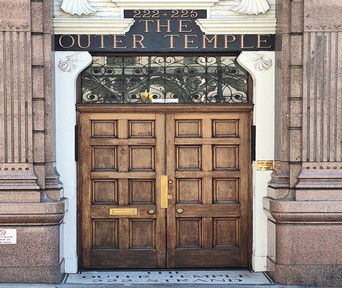Quiz Answer Key and Fun Facts
1. Two of the four Inns of Court, Inner Temple and Middle Temple, reside within the Temple area of London. Both are known as "liberties", and come under the authority of which body?
2. Although all four of the Inns of Court have equal precedence with each other, the early records of all have been lost, so there is no exact date to when each was founded. Which of the four Inns has official records starting most recently?
3. Serjeant's Inn was a dedicated Inn for a group of senior barristers known as Serjeants-at-Law. The Inn was ultimately wound up in the 19th century owing to the increasing prominence of a class of barrister with what title?
4. The Inns of Chancery were bodies that grew in parallel and attached to the four Inns of Court, ultimately serving as the dedicated professional associations for solicitors rather than barristers. However, by the mid 19th century, this purpose had been superseded by other organisations such as the Law Society, and the last Inn of Chancery, Clement's Inn, was dissolved in 1903. Which of the Inns of Court was it attached to?
5. The Inns of Court traditionally held events known as "revels", periods of entertainment and merrymaking, generally lasting from All Saints Eve (31 October) to Candlemas (2 February). One of the most documented events in the life of William Shakespeare took place during the revels at Gray's Inn on 28 December 1594, when which of his plays was performed?
6. While there is an Inner Temple and a Middle Temple, there is no Inn of Court called "Outer Temple". But, there is a building of that name, located within the Temple area close to the other two, located on which thoroughfare?
7. Because Scotland has a separate legal system from England and Wales, Scottish courts do not use barristers from the Inns of Court. What is the name of the equivalent body in Scotland?
8. The Inn of Court of Northern Ireland is a separate body from the Inns of Court in London. Although founded in 1926, it did not gain physical premises until the early 21st century, when the new Bar Library building was opened in Belfast by which Irish politician?
9. Kings Inns is the society that serves as the Inn of Court for barristers in Ireland. Which English monarch was it originally named for?
10. The Doctor's Commons, also known as the College of Civilians, was a body similar to an Inn of Court for lawyers practicing civil rather than common law. The society's original premises were purchased in 1567 on which street in the City of London?
Source: Author
Red_John
This quiz was reviewed by FunTrivia editor
stedman before going online.
Any errors found in FunTrivia content are routinely corrected through our feedback system.
